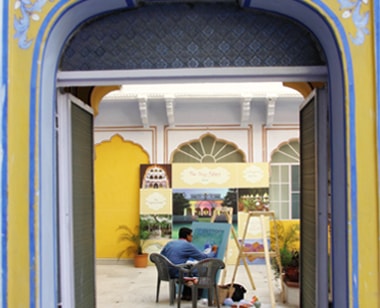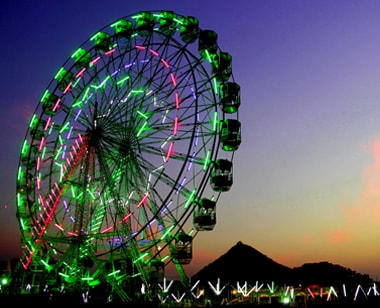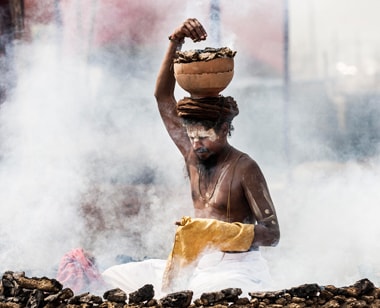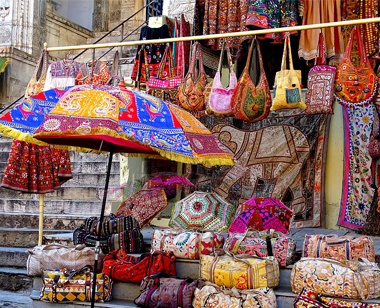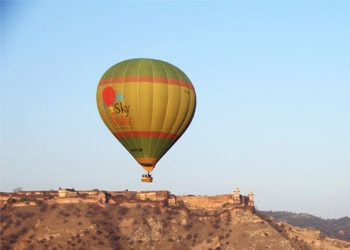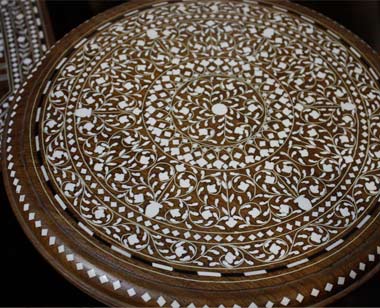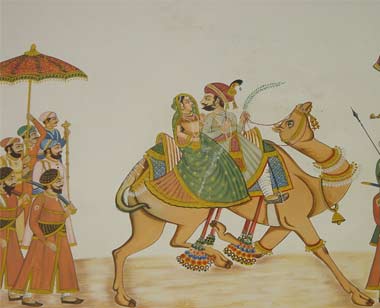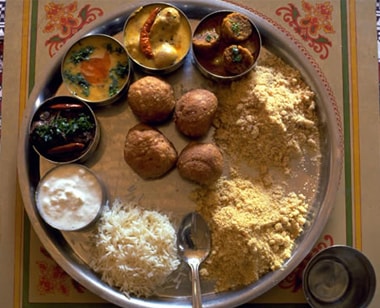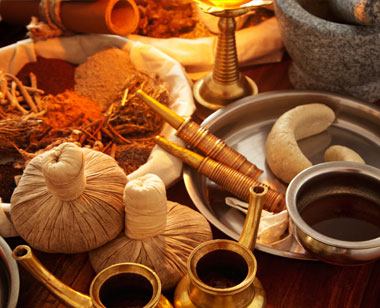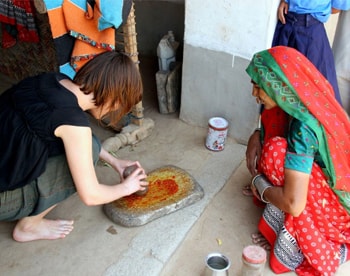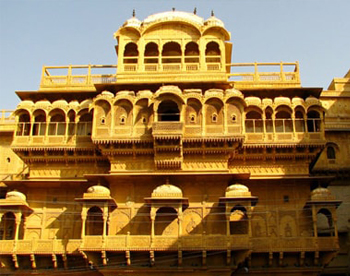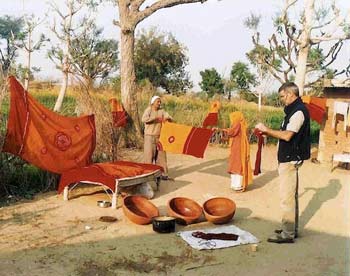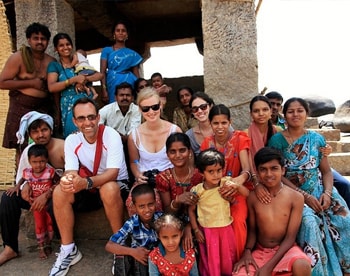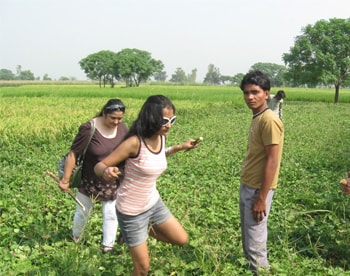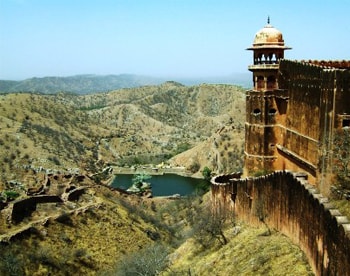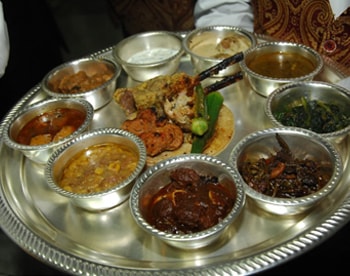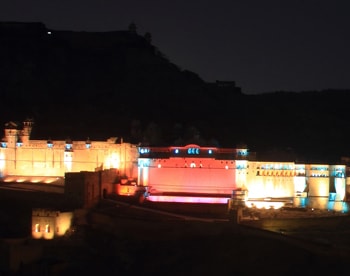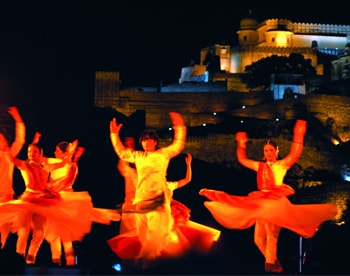Location: South west of Jaipur, Rajasthan
Climate of Mount Abu: Rainfall is between 65-177 cms. In summers between 23.0° C to 34.0° C In winters between 11.0° C to 28.0° C
Best time to visit All year round
Language spoken Rajasthani, Hindi, English and Urdu
Attraction Temples, Lakes and Wild Life Santuary
Religions Hinduism, Jainism and Islam
Mount Abu: The Sole Hill Station of Rajasthan
Mount Abu is the only hill-station of Rajasthan is also famous for the Jain temples named the Delwara Temple. Mount Abu is home to a number of tourist attractions from natural beauty to historical and architectural places, Located near the Sirohi District, Mount Abu is the only hill station in the desert state of Rajasthan. It lies in the Aravalli mountain range at an approximate elevation of around 1,220 meters above sea level, with its highest point being ‘Guru Shikhar’ which is at a height of 1,722 meters above sea level. Being the only hill station in Rajasthan, it has been a popular retreat for the residents as a place away from the scorching desert heat. The place also has a significant place in the Hindu mythology as it is mentioned as the place where the Sage Vashistha retired. Today, the place is a great tourist destination, a hill station with the distinctive blend of the flavors of Rajasthan. It totally deserves a visit.
How to reach Mount Abu
Air: Nearest airport is Dabok Airport, Udaipur i.e. 210 kms.
Rail: Abu Road is on the broad-gauge line between Mumbai & Delhi, so many express trains pass from Abu Road station. The Ahmedabad Mail departs from Abu Road at 1:05 PM & reaches Ahmedabad at 5:25 PM; the same train leaves to Jaipur at 2:20 PM & arrives at 11:25 & Delhi at 5:20 AM. The Tawi Express departs for Jodhpur at 3:25 PM & takes five hours.
Road: Mount Abu is well connected by buses, some buses take you directly to the Mount Abu & some terminate at Abu Road. There are daily express & deluxe buses to Jaipur, Ajmer, Udaipur, Jodhpur, Ahmedabad, Jaisalmer & Delhi. Best way to get there is to pick a luxury cab from Udaipur.
Distance from major cities:
Mount Abu – New Delhi 767 Kms
Mount Abu – Mumbai 766 Kms
Mount Abu – Jaipur 505 Kms
Mount Abu – Udaipur 185 Kms
Mount Abu – Jodhpur 336 Kms
Mount Abu – Jaisalmer 621 Kms
Places to Visit
Nakki Lake
One of the most popular attractions in mount Abu, Nakki Lake is an ancient and sacred lake. According to Hindu mythology the lake was dug out by the Gods by simply using their nails to gain shelter from the Demon Bashkali, however many such mythological stories exist leading to the creation of this lake. The place is a great spot for picnic with friends and family alike. The lake is also famous as Mahatma Gandhi’s ashes were immersed here leading to the construction of Gandhi Ghat, which is also a popular monument located here.
There are plenty of hotels, restaurants and eating joints located near the lake which offer some great local food at really cheap prices. The fountains in the lake add to its natural beauty.
Delwara Jain Temple
Located at a distance of just 2.5 kilometers from mount Abu, the Dilwara Jain temples were built between the 11th and the 13th century. The feature that makes it worth visiting is the amazing and brilliant use of marble in the architecture. The ornamental carvings and the flawless stone laying technique make it one among the most beautiful pilgrimage spots in the world. The temple complex consists of 5 temples which are unique to the Jain culture in India namely Vimal Vasahi, dedicated to the first Jain Tirthankara, Adinath; Luna Vasahi, dedicated to the 22nd Jain Tirthankara, Neminatha; Pithalhar, dedicated to the first Jain Tirthankar, Rishabha; Parshvanath, dedicated to the 23rd Jain Tirthankara, Parshva and Mahavir Swami, dedicated to the last Jain Tirthankara, Mahavira.
The lotus like engravings on the ceilings and the different scenes from the Jain and Hindu mythology represented through carved marble sculptures leaves anyone spellbound.
It is an exquisite Jain temple which is the best example of the Jain architecture in India. It is just 5 kms away from the town. The complex includes 2 temples displaying the fine carving on white marble.
Wildlife sanctuary
The Forest located between the Aravalli mountain range was declared as a wildlife sanctuary in 1980 and covers an area of approximately 288 sq kilometers. It is a sub tropical forest which has an abundance of various species of flora and fauna. While there are traces of past dwellings of the lion and the tiger, but as of now the prime feline predator found here is the Leopard. The rare species found here are sambhar, common langur, wild boar, bear, pangolin, common mongoose, jungle cat, wolf, hyena, jackal, Indian fox, Indian hare, porcupine and hedgehog. These forests are also said to be the home to around 250 species of birds but the most special one is the grey jungle fowl which is unique to this area.
Achalgarh
The name refers to a fort and an ancient kingdom, which was originally built by the Paramara Dynasty rulers. The fort was reconstructed in 1452 by Maharana Kumbha the then ruler of the Mewar kingdom and was renamed as “Achalgarh’ or the immovable. The fort however stands in ruins to this day, leaving behind many remnants which make this place a tourist attraction. The main entrances are characterized by two towers carved out of grey granite, which still stand as a memorial of this once pompous and majestic fort. The place is located at an amazing location and is famous for its ancient temple dedicated to Lord Shiva known as the Achaleshwar Mahadeva Temple. This temple is said to have a foot impression of Lord Shiva himself and also has a brass Nandi and 3 sculptures of buffalos near the pond. The fort walls and the amazing location give an amazing cinematographic view of the surroundings.
Guru Shikar is the highest point in mount Abu and forms the highest point in the Aravalli mountain range. The place is perfect to get a panoramic view of the whole region and is famous for its temple of Guru Dattatreya an incarnation of the Hindu Deities ‘Brahma, Vishnu and Shiva’ in one. The various temples and the amazing views, it was quiet natural to me to take out my trusty paperback and get lost in the enticing plot amidst the enchanting surroundings.
Trevor’s tank or Trevor’s crocodile park is a man made crocodile breeding spot located 5 kilometers away from mount Abu. The location and the lush green surroundings are heavenly. The best time to visit this place is during mild winter months of November and December. It is a great picnic spot which will only be enhanced by the good company of your family or friends. The place also house various fauna like the black bear and obviously the various crocodiles resting on the rocky shores. The birdwatchers and the shutterbugs can get plenty of amazing shots. Interestingly, this place is like an Indianized version of Rivendell.
Brahma Kumari’s Ashram
Perhaps few organisations have stimulated as much change and discussion at the time of their inception, or have undergone such expansion in succeeding decades, as the Brahma Kumaris World Spiritual University. Yet, throughout its growth and development, the BKWSU has managed to maintain its original principles and adhere to its original purpose.
When the University came into being under the name “Om Mandali” it consisted of only a handful of men, women and children living in Hyderabad, Sindh (now part of Pakistan, but at that time part of colonial India). After a respected and wealthy member of their community, Dada Lekhraj, experienced a series of visions in 1936, these spiritual pioneers were inspired to transform their lives.
A year after Om Mandali’s establishment, the organisation moved from Hyderabad to Karachi. For fourteen years, until two years after the partition of India and Pakistan, the founding group of nearly 400 individuals lived as a self–sufficient community devoting their time to intense spiritual study, meditation and self transformation.
Brahma Baba.
World Spiritual Headquarters
In 1950, the community moved to Mount Abu, a quiet place reputed for its ancient heritage and regarded as a sacred destination by many in search of spiritual rejuvenation and empowerment. Nestled high in the Aravali Mountains of Rajasthan, it provided an ideal location for reflection and contemplation. After a few years in a rented building, the community moved to the site which remains the University’s world spiritual headquarters: Madhuban (meaning ‘Forest of Honey’).
Nature Trails (Jungle Trails)
1. Bailey’s Walk : It is a meandering trail that starts from Sun Set road and reaches down to the banks of the Nakki Lake at nearly its South West point. This trek starts from Nakki Lake on the left there is one sign board when we enter it first we have to climb some mountains and then we have to climb 54 steps after that we reach the Goddess (Aghai) temple then our trek goes to Kanerkund there are many beautiful mountains and you can see the moon as well as the sun.
2. Craig’s Walk : It starts from Neemdi Kothi and ends at Ganesh Point at Honeymoon Point.
3. Rishikesh Trail : It stars from Aaarna Village and goes down to plains near the cresent close to Rishikesh Temples.
4. Tiger Trail : One of the most virgin trails that commences from St. Mary’s School and ends at Aaarna Village nearly 7 K.M. after.
5. Bharja Trail : It starts from Orian and goes down to the plains to reach the outskirts of Bharja Village, often used by the forces for their training for jungle walks at night.
6. Bridal Path, Utraj – Vasthanji Trail
Rishikesh Temple
The temple is nearly 7,000 years old, situated in a hill crescent, and was constructed by King Amrish who had established the Amravati civelization in this region. He is credited to have perfomorm hundred “Ashwamedha Ygyas” which is told to have threatened Lord Indra, who attacked him. His “Istha Dev” “Lord Rishikesh” saved him from the wrath of Lord Indra.
Sunset Point
At a short distance from the lake, a spectacular view of the sunset can be witnessed here in quiet contemplation of nature.
Toad Rock
Toad Rock is a mammoth rock structure in Mount Abu hanging over the south of calm and cool Nakki Lake. This is the best attractive rock formation found in the regions of Mount Abu. This rock by view seems to be overlooking the whole lake. People can climb up to the top of the Toad rock and can view the panoramic beauty of the surrounding lake and greenish hilly regions from the top of the rock.
Honeymoon Point
Honeymoon Point, 2.5 kms northwest on Ganesh Road, also known as Andra Point, offers an enchanting view of the verdant plains and valleys. The place looks most beautiful during the dusk hours. The route to Honeymoon Point goes past the Nakki Lake.
Museum and Art Gallery
The museum is divided into two sections. The first section has been adorned by a diorama of local tribal hut with their usual living style by adding a gallery of weapons, musical instruments, ladies ornaments like barly, damani, karna, guthma toda, gaga wala thoomar, kanksi berla, various type of earrings and garments etc. belonging to hill dwellers.
The second section has a series of miniature paintings based on raga-ragnis, lain images from Sirohi, medium sized shields, a small canon called ‘Topdi’ and some pieces of carvings on local wood.
The notable collection of this museum, is the finely carved out statues of Devdasi or Nartakis (Dancer) ranging from 6th century A.D. to 12th century A.D. procured from an ancient township called Chandravati, 7 kms away from Abu. There is an image of the Chakrabahu Shiva having a trishul in one hand and a khadag in the other and sitting on Nandi, the bull. On each side of Shiva are dancing girls.
In the Abu collection consisting of 404 sculptures, the most distinctive exhibit is the Vish Kanya (snake goddess) which is 3 feet high. It is shown breast-feeding a snake. The figures are well executed and the attitudes are impressive and natural. It also has the Surya (8th century A.D.) found in Achalgarh, the Shiva (10th century A.D.) brought from Delwara temple. The Chanvar Vahini and Laxmi (12th century A.D.) also from Chandravati and the Chanmunda (8th century A. D.).
Trevor’s Tank
Named after the British engineer who constructed it, Trevor’s Tank is a delight for bird watchers with densely wooded hills that are a haven to pigeons, peacocks and partridges.
Other Places
Some Ashrms : Agneshwar Ashram, Bhrigu Ashram, Gautam Rishi Ashram etc.
Some Villages : Jawai, Cahndela, Utroj, Sher Gaon etc.
Arna Watch Tower, Chhipa Beri, Kuda- Mamaji, Sirohi Kothi, Mini Nakki – Anjani Mata, Palanpur Point etc.
 +919828167660, +919414075013
+919828167660, +919414075013

